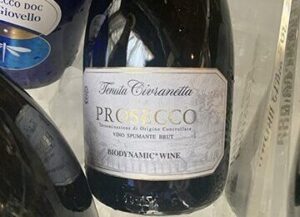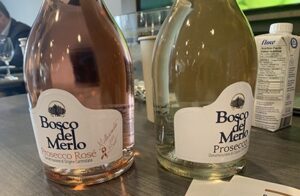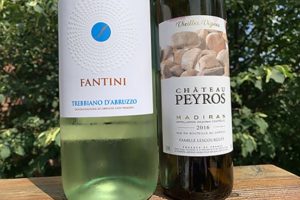
Toronto’s W Hotel provided an elegant venue for the Prosecco DOC event earlier this month.
Worldwide wine sales have been slipping the past few years, and it looks like the trend is going to continue as many coming-of-age consumers choose to drink less alcohol or opt for cocktails instead—or decide to get their buzz in other ways (the cannabinol market grew from $9.57 billion US in 2024 to $10.55 billion US in 2025, and is expected to continue growing at an annual rate of 10.30%).
But one area of the global vino market appears impermeable to these trends—Prosecco. In 2024, Prosecco DOC, situated in the northeast corner of Italy, saw record production and sales of the affordable bubbly, producing 660 million bottles, a 7% increase over the previous year.
By comparison, all of Ontario produced the equivalent of 36 million bottles in 2019. We’ve got a grand total of 191 VQA-registered wineries, a little over 500 grape growers and 18,000 acres of vineyards in this province. The Prosecco region alone, meanwhile, includes roughly 70,000 acres, with just shy of 12,000 grape growers and 355 sparkling wine houses.
With President Trump threatening to impose a 200% on all wine from the European Union, importers and suppliers south of the border are scrambling to stock up on Prosecco.
Fortunately, Canada and Europe play nice with each other, and that was on full display at a Prosecco DOC event I attended earlier this month at Toronto’s W Hotel.

The biodynamic Civranetta (I’d rate it a 90) is available at the LCBO for $19.95.
First, a quick lesson on why Prosecco is such an inexpensive sparkling wine. Apart from the economies of scale aspects noted above, the way Prosecco is made is much less time- and labour-intensive than “traditional-method” sparkling wines like Champagne. Prosecco undergoes it’s second fermentation (which creates the bubbles) in large, pressurized tanks (this is part of a process known as the Charmat method). You can be drinking Prosecco six months or less after its Glera grapes are harvested. By contrast, Champagne’s second fermentation takes place in the bottle, and it’s usually at least three years until that bottle is released. This time-consuming process, which includes riddling (a six-week to three-month process of incrementally rotating and tilting the bottle to remove sediment) contributes to the cost of traditional-method bubbly.
Québec’s Pier-Alexis Soulière, one of just five Canadian Master Sommeliers and one of the few worldwide to have ever attained the prestigious MS designation before the age of 30, hosted the Prosecco event at W Hotel. As with most wine industry folks when talking about sparkling wines, he was quick to remind those in attendance that this effervescent wine is not just for celebrations.

One of my favourite brands at the event that was still seeking an agent was Bosco del Merlo.
One great sparkling wine feature, for example, is that it pairs with virtually anything, including those seemingly impossible-to-match foods like eggs, oily fish dishes, Brussels sprouts, artichokes, asparagus and salty foods like potato chips.
Our event’s wide range of pairings included everything from rosé Prosecco with sushi to extra brut Prosecco with hardy sandwiches.
Beyond its traditional affordability, Prosecco tends to be moderate in alcohol (usually around 11%), which makes it a safe primary ingredient for cocktails. Soulière suggests a few simple recipes. “Everybody knows two classic cocktails: the Mimosa (fresh orange juice and Prosecco) and the Bellini (sweet peaches and Prosecco),” he notes. “But the one I highly recommend is the Rossini, which honours the 19th century composer and is composed of fresh strawberries and Prosecco.”

A classic Rossini—puréed strawberries and Prosecco.
Making a Rossini is about as simple as it gets. While you have the option of including sugar or syrup and lemon juice, all you really have to do is purée the strawberries in a blender, strain it through a mesh sieve, and add your Prosecco. (Stir gently so you don’t lose the fizz.)
“Pair it up with sweet roasted yellow and red bell peppers on a toasted baguette with a little garlic, olive oil and sea salt,” Soulière suggests. “You can also pair it with a toasted crostini with goat cheese and a little lemon zest.”

Pair up your Rossini with this toasted baguette with roasted peppers.
Cheers!




Leave a Reply
Your email is safe with us.